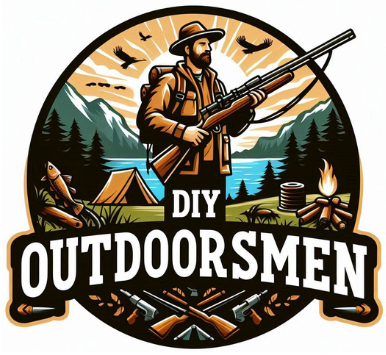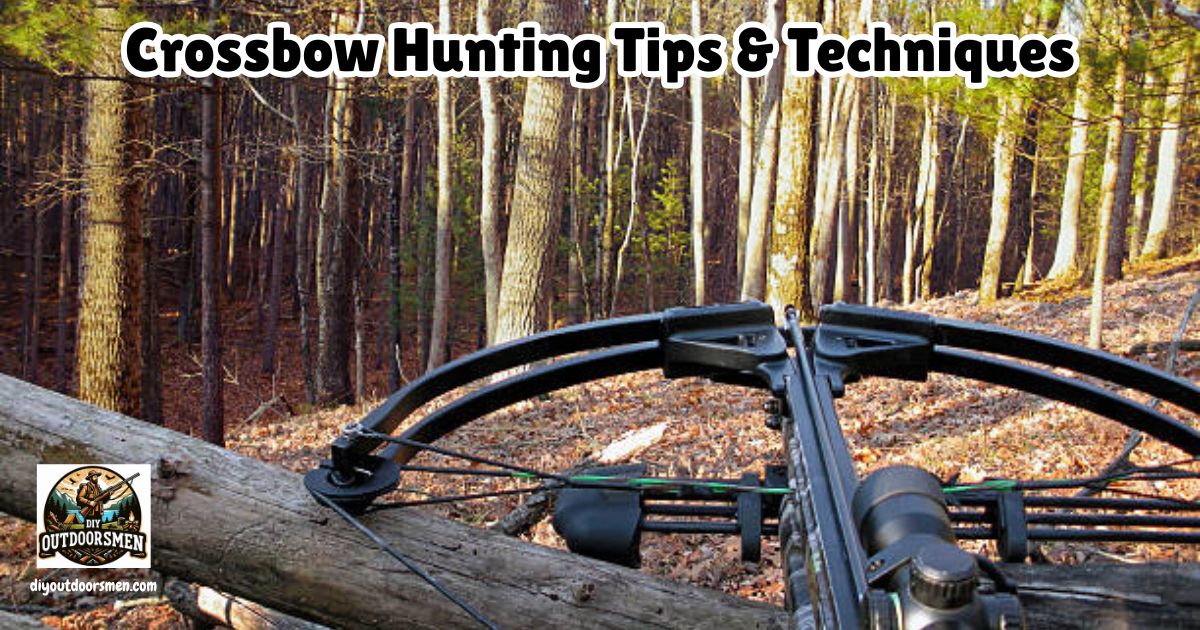Contents
- 1 Getting Equipped and Picking Your First Crossbow
- 2 Mastering Crossbow Basics
- 3 Safety First and Staying Responsible in the Field
- 4 Hunting Strategies for Getting Close and Taking the Shot
- 5 After the Shot: Tracking and Recovery
- 6 What New Crossbow Hunters Should Keep in Mind
- 7 Advanced Crossbow Hunting Tips
- 8 Frequently Asked Questions
- 9 Pros and Cons of Crossbow Hunting
Crossbow hunting has become a popular entry point for those interested in archery and hunting, thanks to the unique mix of ease, challenge, and tradition it offers. I remember the first time I picked up a crossbow. I felt both excited and a little nervous, mostly because I wanted to make sure I was using it safely and effectively.
QUICK LOOK: Tips for Beginner Crossbow Hunters
- Follow Local Laws: Rules around crossbow use and hunting seasons vary a lot. Checking regulations before heading out keeps trips both legal and ethical.
- Understand Your Range: Most crossbows are really accurate at 30 to 40 yards. Trying to shoot farther can quickly lead to missed shots or wounded animals. Getting close is always better.
- Respect Wildlife: Ethical hunting means harvesting only what you need and ensuring clean, humane kills whenever possible.
- Prepare for Weather: Crossbows and bolts can be affected by rain, cold, and humidity. I always prep my gear before a hunt and keep replacement strings or rail lube handy.
- Ask for Advice: Joining a local archery club or connecting with more experienced hunters can be a great way to get helpful feedback and support.
- Weight: Some crossbows are bulky, which can tire you out on longer hunts. Consider a lighter model at first or practice carrying it with your hunting pack.
- Reloading Speed: Reloading takes longer than with a rifle, so make each shot count.
- Noise: Crossbows can be louder than traditional bows, which might spook animals. Quiet cocking devices and limb dampeners can help reduce noise.
If you’re new to crossbow hunting, focusing on the basics like safety, practice, and shot placement is really important for a good experience. I’m going to walk through what you need to know to get started, from picking the right crossbow to mastering hunting techniques in the field.
Getting Equipped and Picking Your First Crossbow
Choosing the right crossbow lays the foundation for safe, enjoyable, and accurate hunting. When I started, I looked for a crossbow that matched my strength and experience. For those new to the sport, picking a model with a moderate draw weight makes it easier to practice and build confidence before moving to more powerful options.
Features like an adjustable stock, a clear scope, and a built-in cocking device can help you handle the crossbow more comfortably and shoot more accurately. I always suggest trying different models in store to see which one fits best and feels balanced.
Taking time to get familiar with your new gear is super important. Review the manual and practice the cocking and loading process before heading out. Keeping your crossbow maintained through regular cleaning and string checks will save you headaches and improve accuracy in the long run. Proper storage and transport of your crossbow using a protective case are also best practices for longevity and safety.
Mastering Crossbow Basics
When I first started practicing with a crossbow, I quickly realized that practice is where you’ll see the most improvement. I spent time at a local range, starting at closer distances and gradually moving back as my aim and confidence improved. Practicing with your hunting bolts (not just target ones) is a good habit because they can fly differently, and you want your shot to be as consistent as possible when you’re in the field.
It also helps a lot to practice from different shooting positions. I set up in a treestand to practice shooting from a higher angle, just as I would during deer season. Doing this exposed me to things I wouldn’t have noticed otherwise, like how my aim shifts downward and how the bolt’s trajectory changes.
Use a rangefinder to judge distances, because knowing how far your target is makes accurate shots much easier. Regular, focused practice builds both muscle memory and confidence, which pays off while hunting. Stretching before shooting sessions and focusing on your breathing can also give a boost to your control and accuracy over time.
- Tip: Practice wearing your actual hunting gear so nothing surprises you on the day of your hunt.
- Tip: Mark your trigger pull and breathing rhythms, since these affect accuracy just like with a firearm.
Safety First and Staying Responsible in the Field
Safety should always come before anything else in crossbow hunting. I learned early on to always point the crossbow in a safe direction. Never walk with a loaded crossbow, and never climb into a treestand or blind with the crossbow cocked.
There are cocking devices and unloaders that make loading and unloading safer and can reduce the risk of injury. Being aware of your surroundings is another key part of staying safe. Make sure the area behind your target is clear, and always keep an eye out for other hunters or hikers, especially in public hunting lands.
Using safety harnesses in elevated positions gives you an extra layer of security and peace of mind. Additionally, bringing a whistle or other signaling device adds another safety layer when venturing into remote locations. Maintaining awareness of changing weather conditions can also help you avoid hazards in the wild.
Hunting Strategies for Getting Close and Taking the Shot
I found patience to be one of the most useful skills for crossbow hunting. Since crossbows can be heavier and a bit louder than vertical bows, setting up in high-traffic areas and waiting quietly works well. Whether I’m hunting from a blind or using a treestand, I do my best to keep movement to a minimum.
Animals are very sensitive to sound and sudden movement, and crossbows allow for a stable shooting position; so, keeping calm and still is your best move. When it’s time to take a shot, shot placement should be at the top of your mind. I aim for broadside or quartering away shots. They give the best chance at hitting the vital organs, which is the most ethical way to hunt.
I always double-check my shooting field for branches or obstacles. Using scent control measures, like scent-free soap and sprays, can also really help by reducing the chances that deer or other game smell me before I get a shot. Setting up in areas with natural cover, such as dense brush, makes it easier to blend in and stay undetected.
After the Shot: Tracking and Recovery
Once a bolt is loosed, I always mark the spot where the animal was standing. Tracking starts with a calm approach; I watch the animal’s path carefully, look for good blood sign, and note anything that might indicate the kind of hit the animal took.
Waiting a reasonable amount of time before tracking helps avoid pushing a wounded animal further, making recovery easier and more humane. If the animal runs out of sight, I start from my marked spot and follow the blood trail patiently.
Bring basic tracking supplies like a flashlight, flagging tape, and a GPS or notepad to keep your bearings. I always review my shot after each hunt, learning from what went well and what could be improved next time. This approach has made me a better hunter with every season. Remember, ethical recovery is as important as ethical shot placement; always be thorough and respectful throughout the process.
What New Crossbow Hunters Should Keep in Mind
Starting crossbow hunting is about more than gear. It’s a blend of preparation, patience, and being willing to learn from each experience. Here are some things I focus on and have seen make a real difference:
- Follow Local Laws: Rules around crossbow use and hunting seasons vary a lot. Checking regulations before heading out keeps trips both legal and ethical.
- Understand Your Range: Most crossbows are really accurate at 30 to 40 yards. Trying to shoot farther can quickly lead to missed shots or wounded animals. Getting close is always better.
- Respect Wildlife: Ethical hunting means harvesting only what you need and ensuring clean, humane kills whenever possible.
- Prepare for Weather: Crossbows and bolts can be affected by rain, cold, and humidity. I always prep my gear before a hunt and keep replacement strings or rail lube handy.
- Ask for Advice: Joining a local archery club or connecting with more experienced hunters can be a great way to get helpful feedback and support.
Common Challenges for Beginners
- Weight: Some crossbows are bulky, which can tire you out on longer hunts. Consider a lighter model at first or practice carrying it with your hunting pack.
- Reloading Speed: Reloading takes longer than with a rifle, so make each shot count.
- Noise: Crossbows can be louder than traditional bows, which might spook animals. Quiet cocking devices and limb dampeners can help reduce noise.
Advanced Crossbow Hunting Tips
As you build comfort and experience, there are always new things to try that can help with success rates. Setting up trail cameras helps you understand animal movement patterns, so you can pick the best stand locations. I also like to experiment with different broadheads to see which ones provide the best blood trails and penetration with my crossbow.
Learning to shoot from a variety of positions—standing, sitting, or kneeling—means you’ll be ready for whatever the situation calls for in the field. Practicing quick, safe reloading can sometimes make the difference, especially if you get a second shot opportunity.
Finally, keeping up with new equipment, from improved scopes to lighter and quieter designs, helps you stay efficient and comfortable. Even small accessories, like a well-designed sling or better rail lube, can make a long day in the field more enjoyable. Reading hunting magazines or online forums is a good way to stay updated on trending gear and best practices from the crossbow hunting community.
Frequently Asked Questions
What’s the best way for a beginner to start crossbow hunting?
Start with a crossbow that’s comfortable for your build and skill. Spend a lot of time practicing at the range and familiarize yourself with local hunting laws and safe handling procedures before heading out to hunt.
How can I improve my accuracy?
Consistent practice, good trigger control, and using a quality rangefinder all help. Practicing with your actual hunting gear and at various distances increases accuracy and confidence.
Are crossbows legal everywhere for hunting?
Crossbow hunting laws vary significantly between states and provinces. Some places have restrictions on seasons or species, so always double-check your area’s regulations before hunting.
Pros and Cons of Crossbow Hunting
My experience with crossbow hunting has shown there are both positives and drawbacks to consider:
- Pros: Easier for beginners to learn compared to vertical bows; generally more accurate; suitable for people with different strengths and physical abilities; versatile shooting positions; and, in many cases, offers a quicker path to ethical shots.
- Cons: Heavier and sometimes noisier than compound or recurve bows; slower to reload; shorter effective range compared to some modern compound bows; and often more expensive than entry-level archery options. Legal limitations exist in some places and during hunting seasons.
If you’re considering crossbow hunting, thinking about these trade-offs can help you find an approach that matches your goals and skill level. With a thoughtful approach, careful preparation, and a dedication to responsible hunting, crossbow hunting can become a truly rewarding adventure for years to come.
Most Recent Articles:
- Understanding Deer Behavior To Improve Your Hunt
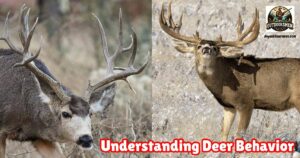
- Complete Guide On Tracking Game Animals
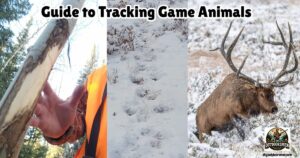
- DIY 4-Step Guide To Field Dressing And Quartering A Deer
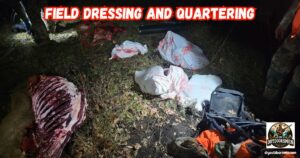
- Night Vision Binoculars For Nocturnal Hunting
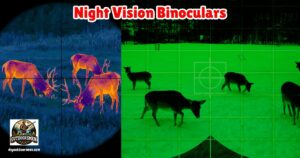
- The Science Behind Camouflage Patterns For Deer Hunting

- Binocular Accessories For Hunters

As always, stay safe, enjoy the journey, and please try to leave it cleaner than you found it. If you have any comments, questions, ideas, or suggestions, please leave them in the comment section below, and I’ll get back to you ASAP. You can follow us on YouTube: Man Art Creations for videos of our DIY Adventures.
P.S. Thanks so much for checking out our blog; we really appreciate it. Just so you know, we may receive a commission if you click on some of the links that appear on our site. This helps us keep our content free and up-to-date for everyone. We appreciate your support!
